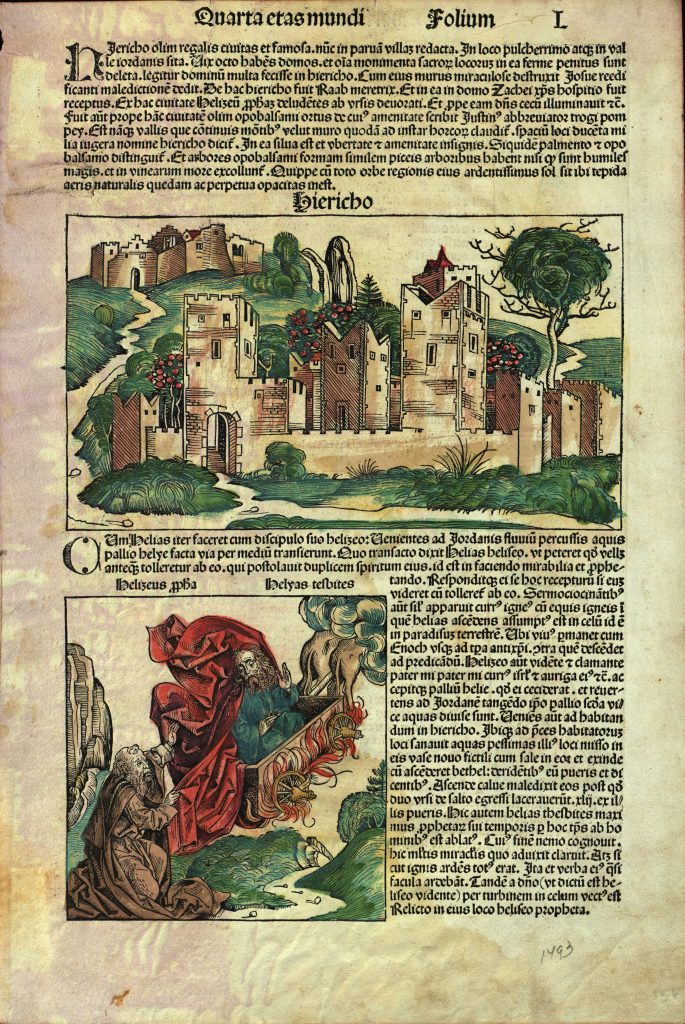
Folio 50 with two illuminated woodcuts.
The Liber chronicarum or Weltchronik of 1493, more commonly known as the Nuremberg Chronicle, is a world history that is one of the most famous early printed books or incunabula. This summer, the PSU Library exhibit presents interpretations of leaves of the Nuremberg Chronicle by students in the Spring 2022 Medieval Portland Capstone taught by Anne McClanan, Professor of Art History.
A network of Nuremberg’s humanists, citizens, businessmen, and artists created the Chronicle. Hartmann Schedel, a physician and bibliophile, compiled the Latin text, which scribe Georg Alt translated into German. Michael Wolgemut and Wilhelm Pleydenwurff created the woodcuts, primarily of cityscapes, portraits, and Biblical scenes. These detailed and colorful illustrations made the Chronicle immensely popular with contemporary audiences.
Anton Koberger printed approximately 1300 copies of the Chronicle in Latin and another 700-1000 in German. The exhibit contains examples of folios from both the Latin and German versions. Today the Nuremberg Chronicle is a treasure of early printing and illustration, and complete copies are hard to come by.
Students selected leaves from the Chronicle from PSU Library Special Collections and researched the text and illustrations, providing a view into how pre-modern Europe saw the unfolding of historical events. The exhibit will be on view in the PSU Library in the first floor elevator lobby from June 13, 2022, throughout the summer term.
Portland State University Library Special Collections thanks Dr. Joe H. Rosenthal for his gift of leaves from the Nuremberg Chronicle to the Harold Schnitzer Family Program in Judaic Studies.
For more information or to make a research appointment, please contact specialcollections@pdx.edu.

